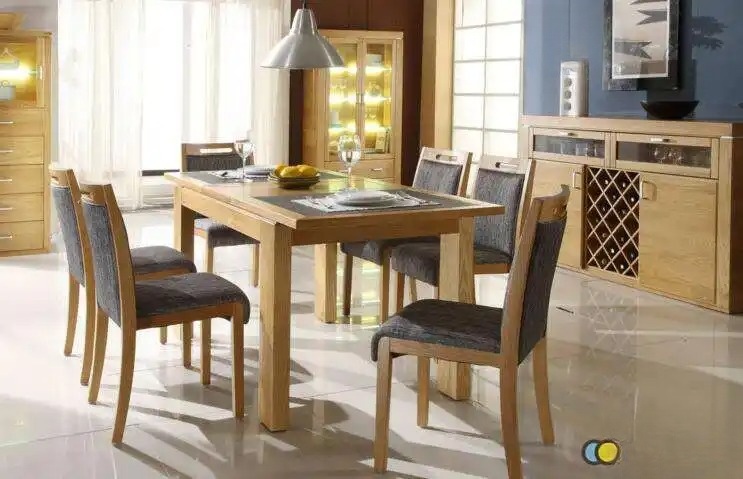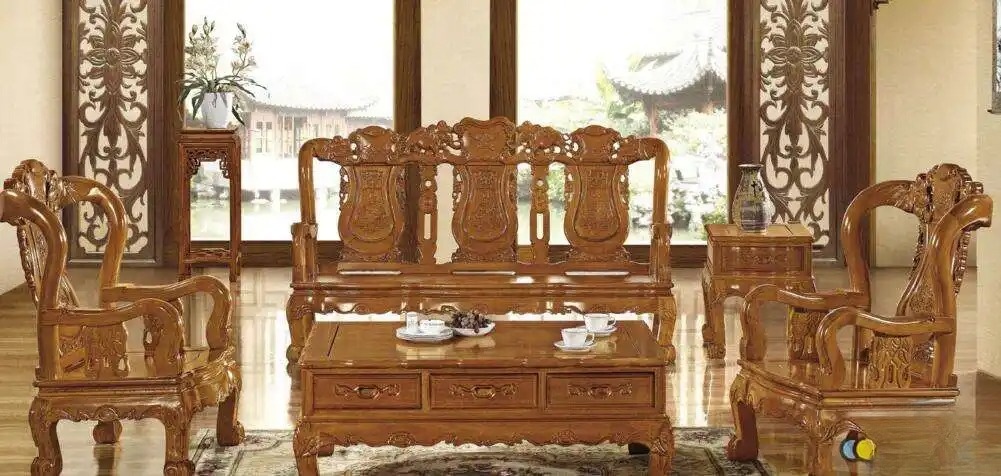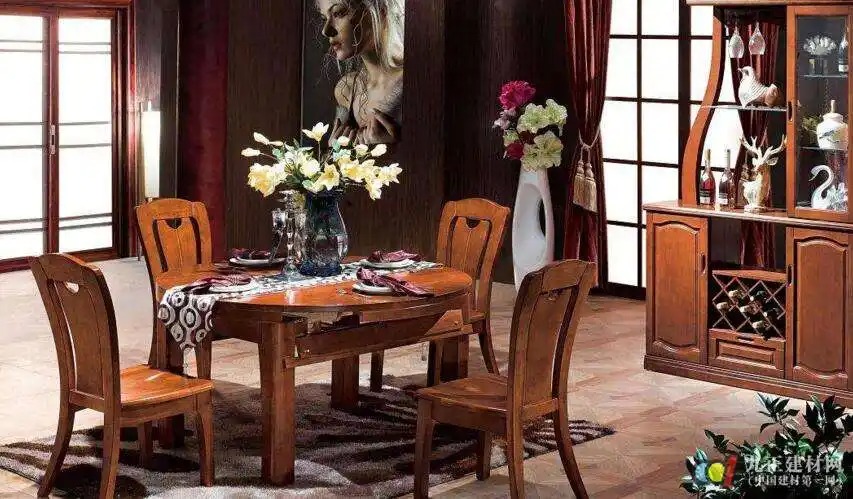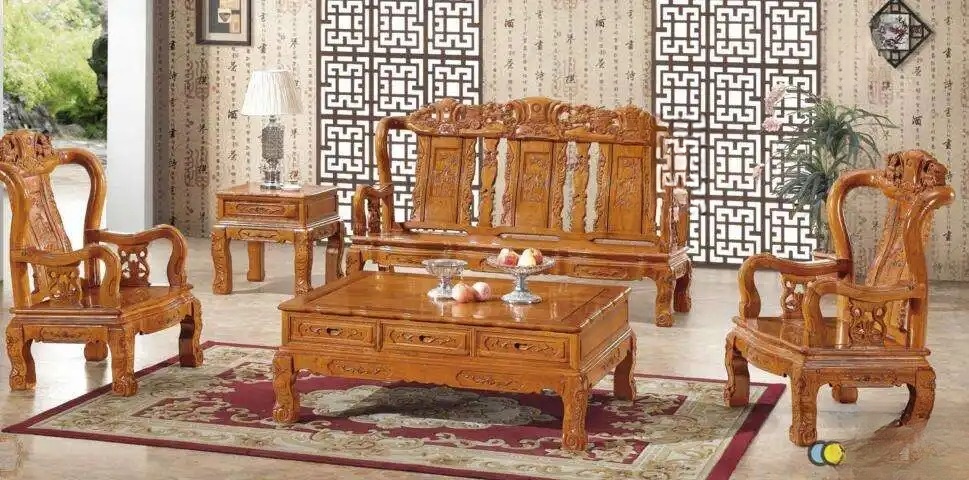Introduction to commonly used furniture terms in the furniture industry
Furniture refers to the essential equipment and facilities for human beings to maintain normal life, engage in production practice and carry out social activities. Many furnitures have many steps in production process, which is complicated, and it is also for the purpose of making better furniture. So how much do you know about the commonly used furniture terms in the furniture industry? It doesn't matter if you don't know. The following Jiuzheng Furniture Network will give you a brief introduction.
Introduction to commonly used furniture terms in the furniture industry:
1. Patina
The marks left on the surface of old furniture due to long-term use. Because of the penetration of sweat and the constant touch of the palm, the wooden surface will have a warm luster.
2. Leather
Specially refers to the original paint leather of old furniture. During the long-term use of furniture, the wood and paint surface are in close contact with the natural environment such as air and moisture, and are slowly weathered. The original paint surface has a patina as warm as jade, and the paint surface has a cracking effect.
3. Distressed Use
new wood or old materials to make imitation old furniture, and make traces of use on new furniture to mix fake eyes with real ones.
4. Drum legs and bulging teeth
Refers to the legs of furniture bulging from the waist, then retracting backwards and inwards, forming an arc, and the feet are often turned inward.

5. Three-bend legs
The transition between the upper and lower parts of the leg column of table furniture is dug inward to form a bend. The feet of bent-leg furniture are mostly turned inward to form a hoof shape.
6. Drop-barrel
Refers to the space under the drawers or doors of furniture such as closed-door cabinets and rounded-corner cabinets. Because it is not easy to be found, it can be used to store some relatively valuable items.
7. Waist
Refers to a waistline that shrinks inward and is shorter than the edge and the tooth bar under the edge of the furniture. Waist can be divided into high waist and low waist, and waist lines can also be divided into straight waist and hollow waist. Waist furniture is an important feature of Ming-style furniture.
8. Toilet
Refers to the wooden frame or pad under the legs of furniture to prevent the furniture legs from getting damp and rotting. This wooden frame or pad is the toile. Altar tables and half-moon tables usually have toiles.
9. Shoulder tenon
Refers to the mortise and tenon used when the legs of waisted furniture are combined with the waist and tooth bar. From the appearance, the cross section of this tenon is half a silver ingot-shaped hanging pin, which is hung with the notch on the back of the tooth bar, so that the waist and the tooth bar are strong and stable.
10. Clamping tenon
This is a common mortise and tenon structure for table-shaped furniture. The four legs are tenoned at the top and close to the mortise at the bottom of the table. The upper end of the leg is open, and the tooth bar and the tooth head are embedded, so that the leg is higher than the tooth bar and the tooth head. This structure allows the four legs to clamp the tooth bar and connect into a square frame, which can make the angle between the table and the legs difficult to change, and make the four legs evenly follow the weight of the table.

11. Shoulder tenon
It is also a common mortise and tenon structure for table furniture. Although the appearance is different from the clamping tenon, the structure is similar in essence. The top of the foot leg is also tenoned, and it is close to the mortise at the bottom of the table. The upper part is also open to insert the tooth bar. However, the upper end of the foot leg is cut out with an oblique shoulder, and a notch is cut out at the intersection of the tooth bar and the foot leg, so that when the tooth bar and the foot leg are clasped together, the oblique shoulder of the leg foot is inserted and clamped to form a flat surface. The advantage of this tenon is that after the tooth bar is pressed down by weight, it bites more tightly with the oblique shoulder of the foot leg.
12. Luogou stretcher
Also called bridge stretcher. It is generally used as a horizontal stretcher connecting the leg columns under tables and chairs. It is named because it is high in the middle and low at both ends, resembling a hunchback.
13. Overlord stretcher
The upper end of the overlord stretcher supports the strap of the table top and is fixed with a dowel, and its lower end is combined with the upper part of the foot leg. The tenon is inserted into the large opening of the lower part of the mortise, and then pushed upward to hang together. The meaning of "overlord" is that this structure is extremely strong and can support the entire piece of furniture.
14.
Wedge squeeze A wedge is a triangular piece of wood that is wide and thick at one end and narrow and thin at the other end. It is driven into the mortise and tenon to make the two fit tightly. When the mortise and tenon are combined, the size of the tenon should be smaller than the eye, and the gap between the two must be filled by the wedge squeeze to make it firm. The wedge squeeze also has the function of adjusting the relative positions of the components.
15. Air-dry density
The volume-weight relationship of wood after it is completely dry varies depending on the tree species. Generally, it refers to the moisture content of wood between 10% and 14%. The middle value, that is, the moisture content of wood of 12%, is taken as the standard for wood drying, which is the meaning of "air-dry". The so-called air-dry density refers to the weight of 1 cubic centimeter of wood when the moisture content of wood is 12%.
If this value is 1, it is the same as the specific gravity of water, and the wood will basically sink in water; if this value is less than 1, the wood will not sink in water; if this value is greater than 1, the wood will sink quickly. The concept of "sinking material" we usually refer to wood with an air-dry density greater than or equal to 1.
Air-dry density is not only a basic indicator for measuring the specific gravity of wood, but also an important indicator for measuring material quality. In most cases, wood (core material) with an air-dry density close to 1 or greater than 1 is high-quality dark precious wood.

16. Material
The quality of wood material includes many factors. Different observation methods and angles have different inspection aspects.
Generally speaking, the quality of the material should be considered from the aspects of wood oil content (the higher the better), wood structure fineness (the finer the better), wood air-dry density (the larger the better), wood size, wood color (the color of the wood board, the more beautiful and bright the better), wood diameter (wood diameter or board width, the larger the better).
17. Wood property
Wood property refers to the deformation rate of wood during the natural drying process or after being made into furniture. Therefore, the smaller the wood property, the better the material. However, the rule of wood is: the harder the material, the better, but often the harder the material, the greater the wood property. For example, the high-grade ebony in Africa has a very good material and the hardness of the wood is almost the highest among all hardwoods, but as the saying goes, "hard is easy to break", the wood property of this ebony is particularly large. It takes almost a whole year to artificially shape this wood; if it is left to dry naturally, it will be difficult to dry thoroughly in ten years. So it is necessary to balance the relationship between the two.
18. Redwood and whitewood
The "redwood" in furniture does not refer to a specific tree species. It is mainly hardwood with a red or dark red base color relative to whitewood, and it specifically refers to the core wood of these woods, excluding sapwood. Rosewood and old redwood are typical redwoods. Whitewood in furniture does not refer to the wood of a specific tree species. It is relative to redwood and refers to those softwoods suitable for making furniture, but does not include softwoods that can only be used as fuel. Phoebe nanmu is a typical whitewood and is the best among whitewoods.
19. Furniture wood and firewood
Furniture wood includes all dark precious hardwoods, as well as high-quality whitewoods such as Phoebe nanmu, beech, catalpa, and elm that are often used to make furniture. Firewood refers to the wood of various tree species that are mainly used as fuel.
However, the connotations of furniture wood and firewood are different in different places. For example, elm is considered as high-quality furniture in the north, but it is considered as firewood in most areas of the south. In Yunnan, ironwood (Aidaomu, black heartwood), one of the precious mahogany species, is used as high-quality firewood by the ethnic minorities in the production area. Ironwood was a high-quality wood second only to rosewood in ancient times, but it was also considered the best firewood for burning charcoal in Guangxi and Yunnan at that time.
20. Tangential section
Tangential section is a method of cutting wood for observing wood. It is generally sawed at a 45-degree vertical angle relative to the trunk, and then the cut surface is planed. The tangential section is most convenient for observing wood grain effects and material structure.
21. Cross section
Cross section is also a method of cutting wood for observing wood. It is sawed at a 90-degree vertical angle relative to the trunk, and then the cut surface is planed. The cross section is convenient for observing the growth rings, material structure density, crystals, oiliness, etc. of wood.
22. Longitudinal section
Longitudinal section, also known as radial section, is one of the three main methods of cutting wood for observation. The wood is sawed parallel to the trunk and then the cut surface is planed. Longitudinal section of hardwood must be carried out on the core material. Longitudinal section is convenient for observing the wood grain, color, and fineness of the wood.

23. Waxing
The last process after polishing all hardwood furniture is waxing. Waxing can make hardwood furniture better show the natural pattern, wood structure and color of the wood. There are two ways of waxing: baking wax and rubbing wax. There is no significant difference. Both add a layer of colorless protective facilities to hardwood furniture. The key to waxing is to be even and leave no dead corners. The wax used on high-end furniture is generally pure natural wax. Nowadays, there are very few natural waxes, and chemical synthetic waxes have become the mainstream. Waxing with chemical wax is very convenient and has a good waxing effect, but it causes air pollution and is far less protective than natural wax for furniture. Natural wax is rarely used in large-scale hardwood furniture.
24. Protective paint
Some furniture, such as tea trays and tabletops, cannot be waxed because they are subject to high temperatures or possible heavy blows. Protective paint must be applied. The best protective paint is colorless earth paint, followed by modern green and environmentally friendly colorless paint. Earth paint is now difficult to find, and can only be seen occasionally in some places in subtropical areas.
One thing to keep in mind is that all colored paints are not hardwood furniture protective paints.
The above is an introduction to the commonly used furniture terms in the furniture industry . The content is for reference only. I hope it can help you understand furniture terms to a certain extent.